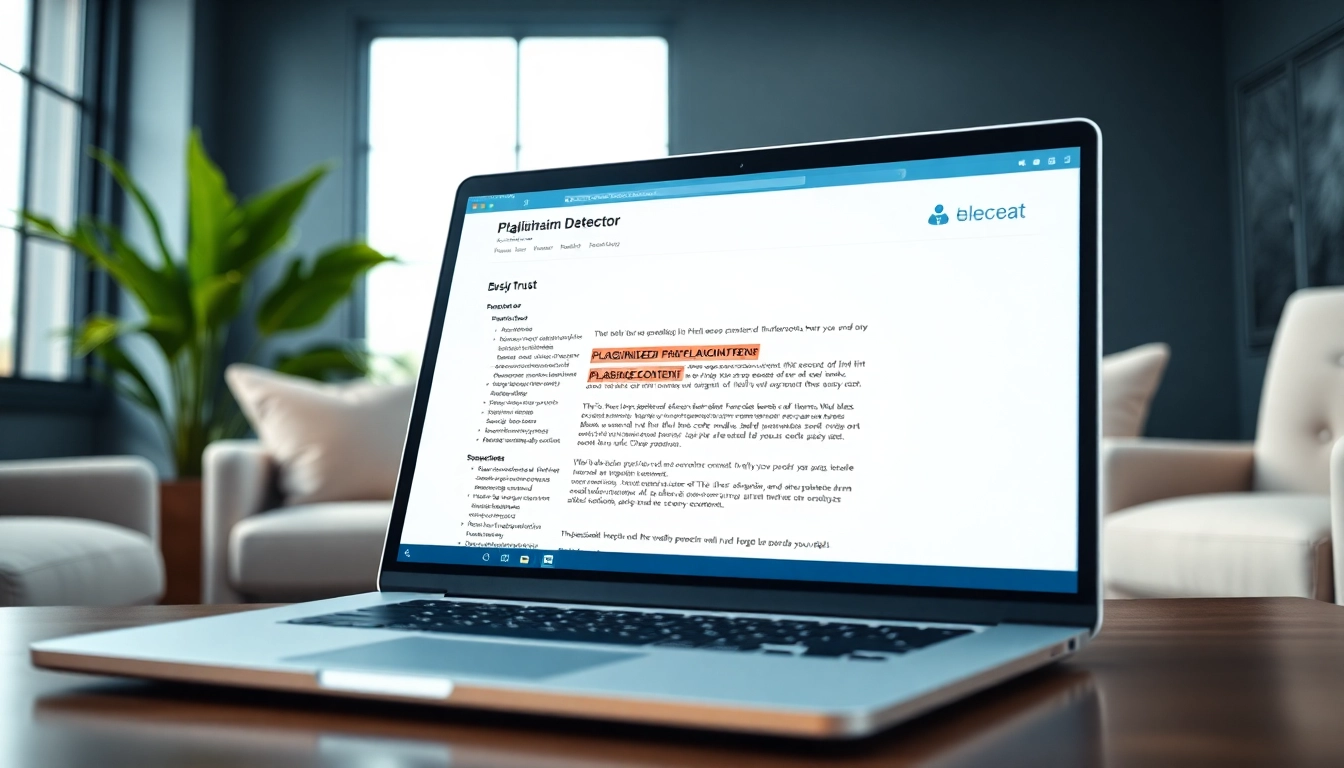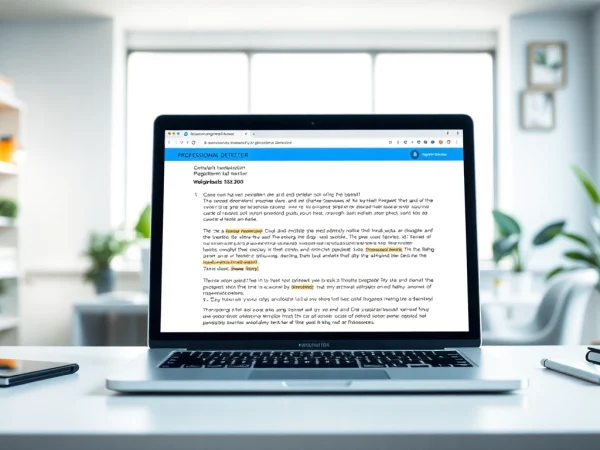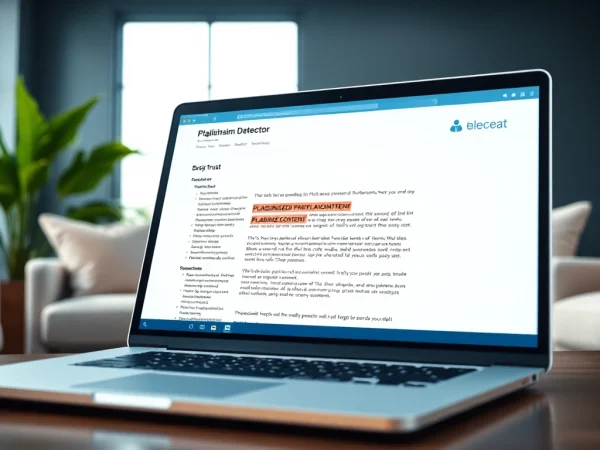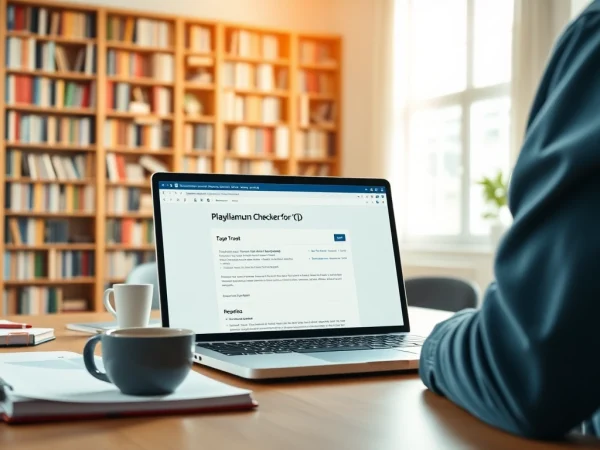Mastering Content Integrity: The Essential Guide to Using a Plagiarism Detector Effectively
Understanding Plagiarism and Its Impact
Plagiarism is a term that frequently surfaces in academic and professional contexts, carrying significant weight in the digital age. As more individuals create and share content online, understanding what constitutes plagiarism and its implications becomes critical. With the advancement of technology, tools like a plagiarism detector have emerged to help individuals ensure the originality of their work. This article explores the essence of plagiarism, its types, consequences, and the pivotal role that detectors play in navigating these challenges.
What is Plagiarism?
Plagiarism is the act of using someone else’s work, ideas, or intellectual property without proper acknowledgment, presenting it as one’s own. It can range from direct copying of text to less obvious forms such as paraphrasing without crediting the source. In academic settings, plagiarism undermines the integrity of research and education, while in professional environments, it can lead to legal issues and damage reputations.
Types of Plagiarism
Understanding the different types of plagiarism is crucial for anyone involved in writing. The main categories include:
- Direct Plagiarism: Copying another’s work word-for-word without citation.
- Self-Plagiarism: Reusing one’s own previously published work without acknowledgment.
- Partial Plagiarism: Using sections of someone else’s work intermixed with one’s own, without proper citation.
- Accidental Plagiarism: Unintentionally failing to credit sources or misquoting them, often due to poor note-taking.
The Consequences of Plagiarism
The fallout from plagiarism can be severe and varies based on the context. In academia, students may face disciplinary actions ranging from failing grades to expulsion. In the professional realm, companies may suffer reputational damage and legal actions, which could result in financial losses. Beyond institutional consequences, plagiarism can tarnish an individual’s credibility and integrity, impacting future opportunities.
How a Plagiarism Detector Works
Plagiarism detectors are powerful tools designed to scan documents for similarities with existing content. They employ complex algorithms and extensive databases to detect instances of copied or closely paraphrased content. Understanding how these detectors operate can aid users in making the most of their functionalities.
Technology Behind Plagiarism Detection
At the core of plagiarism detection technology lies sophisticated algorithms that analyze text for patterns and structures similar to existing works. Most detectors utilize:
- String Matching Techniques: Algorithms that compare text directly to stored documents to find exact matches.
- Fingerprinting: This method generates a unique identifier for pieces of text, allowing for the rapid identification of similar content.
- Semantic Analysis: Advanced detectors use natural language processing (NLP) to understand context and meaning, which helps in identifying paraphrased content.
Comparative Analysis of Popular Detectors
There are numerous plagiarism detection tools available, each boasting unique features. Some popular options include:
- Turnitin: Widely used in educational institutions, it not only checks for plagiarism but also promotes writing integrity through feedback mechanisms.
- Grammarly: Known for grammar checks, its plagiarism tool scans uploaded documents against millions of web pages to flag similarities.
- PapersOwl: Offers a free plagiarism checker that provides detailed reports, making it popular among students.
- Duplichecker: A free tool that allows users to copy and paste text to quickly identify copied content.
Key Features to Look For
When choosing a plagiarism detector, consider the following features:
- Accuracy: The ability to identify true instances of plagiarism without generating false positives.
- Database Size: A large database increases the likelihood of detecting copied content.
- User-Friendly Interface: The tool should be easy to navigate, allowing users to quickly upload documents and receive reports.
- Detailed Reports: Should provide clear and actionable feedback on plagiarism detection.
Choosing the Right Plagiarism Detector for Your Needs
Selecting the appropriate plagiarism detector can be challenging, especially with the numerous options available. Here are essential considerations that can guide your decision.
Free vs. Paid Options
Free plagiarism checkers often have limitations regarding database access and report depth, which may not suffice for professional use. Paid options usually provide comprehensive scanning and feedback features that enhance the writing process. Weighing the cost against potential benefits is crucial in making a wise choice.
Specific Use Cases for Different Audiences
Different groups have varying needs when it comes to plagiarism detection. For example:
- Students: Often require free options that offer sufficient capabilities for academic assessments.
- Researchers: May benefit from robust tools that check against numerous academic papers and publications.
- Content Creators: Individuals working in marketing and web content may rely on both grammar and plagiarism checks.
User Tips for Effective Results
To maximize the efficacy of plagiarism detectors, users should adhere to these practices:
- Conduct Multiple Checks: Use different detectors for a thorough review.
- Review Reports Carefully: Understanding sources of flagged content is crucial to maintaining originality.
- Revise and Paraphrase: Take time to rewrite flagged sections appropriately without losing the original meaning.
Best Practices for Using a Plagiarism Detector
Using a plagiarism detector productively involves a systematic approach and an understanding of how to interpret results accurately.
Steps to Follow Before Submitting Work
Taking precautions can prevent plagiarism issues. The following steps are recommended before submission:
- Use Detectors Early: Running checks during the writing process is often more effective than last-minute screenings.
- Correct Citation Formats: Ensure all references are properly formatted to avoid unintentional plagiarism.
- Seek Feedback: An external perspective can be beneficial in identifying areas that may require rephrasing.
Interpreting Detection Reports
Detection reports can be intricate and multifaceted. Users should focus on:
- Similarity Scores: High similarity scores warrant further investigation.
- Source Links: Checking the original sources of flagged content helps assess the severity of the issue.
- Suggested Changes: Utilize recommendations to enhance the originality of the work.
Integrating Results into the Writing Process
Feedback from plagiarism detectors should be integrated thoughtfully into the writing process. This entails:
- Adjusting Writing Habits: Regularly using a detector can instill a habit of proper citation and originality.
- Learning from Mistakes: Reflect on instances of flagged content to grow as a writer.
- Utilizing Tools: Other writing tools can aid in creating original content concurrently with plagiarism checks.
Staying Ethical in the Digital Age
In our rapidly evolving digital landscape, ethical considerations remain paramount. Ensuring the integrity of work fosters trust and respect within academic and professional communities.
Maintaining Academic Integrity
Academic integrity is not solely about plagiarism prevention; it also encompasses the promotion of genuine creativity and critical thinking. Institutions can implement workshops and resources that emphasize originality as a core value.
Tips for Original Content Creation
Creating original content entails a proactive approach. Here are effective strategies:\
- Engaging in Research: Diverse sources can provide fresh perspectives and stimulate creative thinking.
- Brainstorming Techniques: Employ brainstorming methods to develop unique ideas and reduce reliance on existing texts.
- Regular Practice: Consistent writing habits can enhance one’s voice and style, leading to more original outputs.
Future Trends in Plagiarism Detection
The field of plagiarism detection is continually evolving. Anticipated trends include:
- AI Integration: More advanced AI systems will likely improve accuracy in detecting nuanced forms of plagiarism.
- Real-time Detection: Future tools may provide real-time suggestions during the writing process, akin to grammar checkers.
- Greater Accessibility: Enhanced features with user-friendly interfaces will make plagiarism detection accessible for all.










